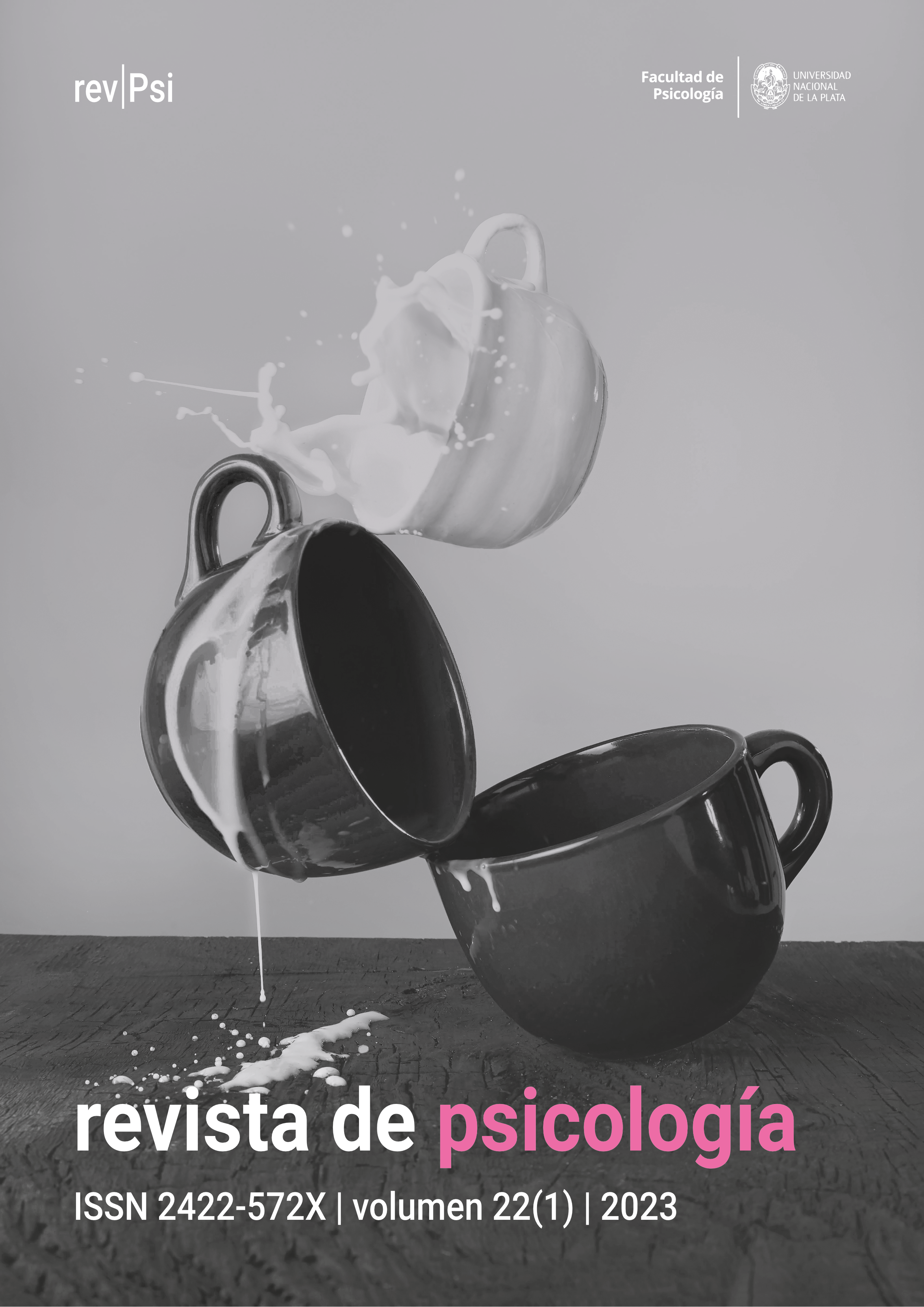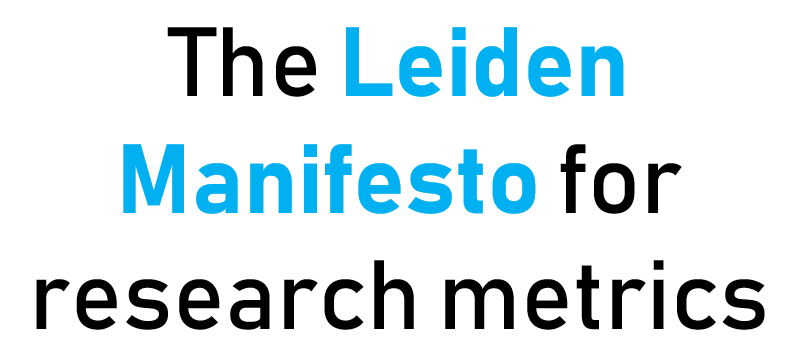Incidence of screen time in children under 2 years old
DOI:
https://doi.org/10.24215/2422572Xe086Keywords:
screen time, babies, adverse effects, mobile phone, neurodevelopmentAbstract
There is no consensus about the consequences of early exposure to digital media on children’s health and wellness, but some researchers warn about the need for adult supervision to screen out content and set up exposure rules. Babies need to explore the environment to develop new cognitive, sensory and language skills. Since our capacity to adapt swiftly to a changing environment develops as we grow up, early disturbance in the development of executive function may cause short-, mid-, and long-term consequences. Misuse of ICT has a negative impact on brain neuroplasticity, which will eventually lead to low self-esteem, poor cognitive performance or maladaptive behaviour, depending on age and related skills. It might also affect sight, sleep, weight, development, executive function and behaviour. Adults’ commitment to responsible use of technology tools is essential to ensure the optimal development of children born and raised in digital times.
Downloads
Metrics
References
AAP, American Academy of Pediatrics Council on Communications and Media (2011). Media use by children younger than 2 years. Pediatrics, 128(5), 1040-4045. https://doi.org/10.1542/peds.2011-1753
AAP, American Academy of Pediatrics Council on Communications and Media (2016). Media and young minds. Pediatrics, 138(5), e20162591. https://doi.org/10.1542/peds.2016-2591
Aguilera Eguía, R. (2014). ¿Revisión sistemática, revisión narrativa o metaanálisis? Revista de la Sociedad Española del Dolor, 21(6), 359-360. http://dx.doi.org/10.4321/S1134-80462014000600010
Beyens, I. y Nathanson, A. I. (2019). Electronic media use and sleep among preschoolers: Evidence for time-shifted and less consolidated sleep. Health Communication, 34(5), 537-544. https://doi.org/10.1080/10410236.2017.1422102
Christakis, D. A., Zimmerman, F. J., Di Giuseppe, D. L. y McCarty, C. A. (2004). Early television exposure and subsequent attentional problems in children. Pediatrics, 113(4), 708-13. https://doi.org/10.1542/peds.113.4.708
Cheung, C. H., Bedford, R., De Urabain, I. R. S., Karmiloff-Smith, A., y Smith, T. J. (2017). Daily touchscreen use in infants and toddlers is associated with reduced sleep and delayed sleep onset. Scientific Reports, 7, 46104. https://doi.org/10.1038/srep46104
Dennison, B. A., Erb, T. A. y Jenkins, P. L. (2002). Television viewing and television in bedroom associated with overweight risk among low-income preschool children. Pediatrics, 109(6), 1028-1035. https://pediatrics.aappublications.org/content/109/6/1028.short
Detnakarintra, K., Trairatvorakul, P., Pruksananonda, C. y Chonchaiya, W. (2019). Positive mother‐child interactions and parenting styles were associated with lower screen time in early childhood. Acta Paediatrica, 109(4). https://doi.org/10.1111/apa.15007
Duch, H., Fisher, E. M., Ensari, I. y Harrington, A. (2013). Screen time use in children under 3 years old: A systematic review of correlates. International Journal of Behavioral Nutrition and Physical Activity, 10(102). https://doi.org/10.1186/1479-5868-10-102
Eskritt, M., Whalen, J. y Lee, K. (2008). Preschoolers can recognize violations of the Gricean maxims. British Journal of Developmental Psychology, 26(3), 435-443. https://doi.org/10.1348/026151007X253260
García-Molina, A., Enseñat-Cantallops, A., Tirapu-Ustárroz, J. y Roig-Rovira, T. (2009). Maduración de la corteza prefrontal y desarrollo de las funciones ejecutivas durante los primeros cinco años de vida. Revista de Neurología, 48(8), 435-440. https://doi.org/10.33588/rn.4808.2008265
Garrison, M. M., y Christakis, D. A. (2005). A teacher in the living room?: Educational media for babies, toddlers and preschoolers: A background report prepared for Kaiser Family Foundation. Henry J. Kaiser Family Foundation. https://www.scirp.org/(S(lz5mqp453edsnp55rrgjct55))/reference/ReferencesPapers.aspx?ReferenceID=866217
Garrison, M. M., Liekweg, K. y Christakis, D. A. (2011). Media use and child sleep: The impact of content, timing, and environment. Pediatrics, 128(1), 29-35. https://doi.org/10.1542/peds.2010-3304
Gómez-Luna, E., Fernando-Navas, D., Aponte-Mayor, G. y Betancourt-Buitrago, L. A. (2014). Metodología para la revisión bibliográfica y la gestión de información de temas científicos, a través de su estructuración y sistematización. Dyna, 81(184), 158-163. https://doi.org/10.15446/dyna.v81n184.37066
Grijalva, P. K., Cornejo, G. E., Gómez, R. R., Real, K. P. y Fernández, A. (2019). Herramientas colaborativas para revisiones sistemáticas. Revista Espacios, 40(25). http://www.revistaespacios.com/a19v40n25/19402509.html
He, M., Irwin J. D., Sangster Bouck L. M., Tucker P. y Pollett G. L. (2005). Screen-viewing behaviors among preschoolers parents' perceptions. American Journal of Preventive Medicine, 29(2), 120-5. https://doi.org/10.1016/j.amepre.2005.04.004
Hernández, A. Q. (2019). Las pantallas y el desarrollo de los niños pequeños. https://www.cubahora.cu/blogs/consultas-medicas/las-pantallas-y-el-desarrollo-de-los-ninos-pequenos?page=3
Hill, D. L. (28 de octubre de 2016). Por qué evitar que los bebés y los niños pequeños vean la televisión. Healthychildren.org. https://www.healthychildren.org/Spanish/family-life/Media/paginas/why-to-avoid-tv-before-age-2.aspx
Hutton, J. S., Dudley, J., Horowitz-Kraus, T., DeWitt, T. y Holland, S. K. (2020). Associations between screen-based media use and brain white matter integrity in preschool-aged children. JAMA Pediatrics, 174(1), e193869-e193869. https://doi.org/10.1001/jamapediatrics.2019.3869
Krynski, L., Ciancaglini, A. y Goldfarb, G. (2017). Bebés, niños, adolescentes y pantallas: ¿qué hay de nuevo? Archivos Argentinos de Pediatría, 115(4), 404-408. https://scp.com.co/wp-content/uploads/2014/13/bnap.pdf
Li, C., Cheng, G., Sha, T., Cheng, W. y Yan, Y. (2020). The relationships between screen use and health indicators among infants, toddlers, and preschoolers: A meta-analysis and systematic review. International Journal of Environmental Research and Public Health, 17(19), 7324. https://doi.org/10.3390/ijerph17197324
Linebarger, D. L. y Walker, D. (2005). Infants’ and toddlers’ television viewing and language outcomes. American Behavioral Scientist, 48(5), 624-645. https://doi.org/10.1177%2F0002764204271505
Madigan, S., Browne, D., Racine, N., Mori, C. y Tough, S. (2019). Association between screen time and children’s performance on a developmental screening test. JAMA Pediatrics, 173(3), 244-250. https://doi.org/10.1001/jamapediatrics.2018.5056
Mendieta Pineda, Z. L. (2017). Efectos adversos en el desarrollo visual y cognitivo en niños menores de 3 años relacionados con el tiempo excesivo de uso de pantallas digitales. Tesis de grado. Facultad de Ciencias de la Salud. Optometría. Universidad de La Salle. https://ciencia.lasalle.edu.co/optometria/9
Ortiz, Z. (2005). ¿Qué son las revisiones sistemáticas? CIE. Academia Nacional de Medicina, Buenos Aires. http://www.epidemiologia.anm.edu.ar/wp-content/uploads/2018/06/Que-son-las-revisiones-sistematicas-_-2005.pdf
Pinchak, C. (2020). Pandemia por coronavirus (COVID-19); sorpresa, miedo y el buen manejo de la incertidumbre en la familia. Archivos de Pediatría del Uruguay, 91(2), 76-77. http://dx.doi.org/10.31134/ap.91.2.1
Potes, M. V. y Filet Larrea, G. J. (2018). Tecnofamilias: crecer en cavernas digitales. Eureka, 15(2). https://psicoeureka.com.py/sites/default/files/articulos/eureka-15-2-16.pdf
Radesky, J. S. y Christakis, D. A. (2016). Increased screen time: Implications for early childhood development and behavior. Pediatric Clinics of North America, 63(5), 827-839. https://doi.org/10.1016/j.pcl.2016.06.006
Radesky, J., Miller, A., Rosenblum, K. L., Appugliese, D., Kaciroti, N. y Lumeng, J. C. (2015). Maternal mobile device use during a structured parent-child interaction task. Academic Pediatrics, 15(2), 238–244. https://doi.org/10.1016/j.acap.2014.10.001
Real Academia Española (2019). Diccionario de la Lengua Española (23a ed.).
Rideout, V. J. y Hamel, E. (2006). The media family: Electronic media in the lives of infants, toddlers, preschoolers and their parents. The Henry J. Kaiser Family Foundation. https://www.kff.org/wp-content/uploads/2013/01/7500.pdf
Rideout, V. J., Vandewater, E. A. y Wartella, E. A. (2003). Zero to six: Electronic media in the lives of infants, toddlers and preschoolers. The Henry J. Kaiser Family Foundation. https://eric.ed.gov/?id=ed482302
Roda, C. S. R., Arias, C. B., Carrasco, M. J. P., Vila-Coro, V. A., Rojo, M. G., Navarro, C. B., y Gutiérrez, E. C. (2015). Síndrome de visión del ordenador (CVS): un nuevo reto para la prevención. Seguridad y Promoción de la Salud, 25(140). https://app.mapfre.com/fundacion/html/revistas/seguridad/n140/es/articulo3.html
Rodríguez Sas, O. y Estrada, L. C. (2019). Comunicación familiar en la era del vacío: nuevas patologías asociadas al uso problemático del móvil. Revista de Psicología, 18(2), 105-123. https://doi.org/10.24215/2422572Xe040
Romero, C. C., del Mazo Fuente, A., Besada, M. D. y Hernández, M. D. L. O. R. (2020). Algunas aportaciones de la orientación educativa en red durante el confinamiento por la pandemia de COVID-19. Revista AOSMA, 28, 33-49. TODO=Algunas+aportaciones+de+la+orientaci%C3%B3n+educativa+en+red+durante+el+confinamiento+por+la+pandemia+de+COVID-19
Tamana, S. K., Ezeugwu, V., Chikuma, J., Lefebvre, D. L., Azad, M. B., Moraes, T. J., Subbarao, P., Becker, A. B., Turvey, S. E., Sears, M. R., Dick, B. D., Carson, V., Rasmussen, C. [ ... ] y Mandhane, P. J. (2019). Screen-time is associated with inattention problems in preschoolers: Results from the CHILD birth cohort study. PloS one, 14(4), e0213995. https://doi.org/10.1371/journal.pone.0213995
Tomé, J. M. S. (2019). Incidencia de los smartphone en el desarrollo de la plasticidad cerebral en niños de 0 a 6 años, en un contexto de alta vulnerabilidad/Incidence of smartphones in the development of brain plasticity in children between the ages of 0 to 6 years, in a context of high vulnerability. Brazilian Journal of Development, 5(6), 6020-6030. https://doi.org/10.34117/bjdv5n6-114
Tremblay, M. S., Chaput, J. P., Adamo, K. B., Aubert, S., Barnes, J. D., Choquette, L., Duggan, M., Faulkner, G., Goldfield, G. S., Gray, C. E., Gruber, R., Janson, K., Janssen, I., Janssen, X., Jaramillo García, A., Kuzik, N., LeBlanc, C., MacLean, J., Okely, A. D. ... y Gruber, R. (2017). Canadian 24-hour movement guidelines for the early years (0–4 years): An integration of physical activity, sedentary behaviour, and sleep. BMC Public Health, 17(5), 874. https://doi.org/10.1186/s12889-017-4859-6
Ubieto, J. R. y Pérez Álvarez, M. (2018). Niñ@s hiper. Infancias hiperactivas, hipersexualizadas, hiperconectadas. Ned Ediciones. https://doi.org/10.32093/ambits.vi51.1428
Unicef (2018). Más de 175.000 niños se conectan cada día por primera vez a Internet. https://www.unicef.org/es/comunicados-prensa/los-m%C3%A1s-de-175000-ni%C3%B1os-que-se-conectan-en-l%C3%ADnea-por-primera-vez-todos-los-d%C3%ADas
van den Heuvel, M., Ma, J., Borkhoff, C. M., Koroshegyi, C., Dai, D. W., Parkin, P. C., Maguire, J. L. y Birken, C. S. (2019). Mobile media device use is associated with expressive language delay in 18-month-old children. Journal of Developmental and Behavioral Pediatrics, 40(2), 99. https://doi.org/10.1097/DBP.0000000000000630
Vandewater, E. A., Rideout, V. J., Wartella, E. A., Huang, X., Lee, J. H. y Shim, M. S. (2007). Digital childhood: Electronic media and technology use among infants, toddlers, and preschoolers. Pediatrics, 119(5), e1006-e1015. https://doi.org/10.1542/peds.2006-1804
Velasco Rust, A. del P. y Almeida Monge, E. J (2018). Impacto del "Tiempo de Pantalla" (televisión, computadora, celular, tablets) sobre el desarrollo del coeficiente intelectual de niños de 12 a 48 meses. Tesis de grado inédita. Facultad de Ciencias Sociales. Universidad Estatal de Milagro (UNEMI). http://repositorio.unemi.edu.ec/handle/123456789/4241
Waisman, I., Hidalgo, E. y Rossi, M. L. (2018). Uso de pantallas en niños pequeños en una ciudad de Argentina. Archivos argentinos de pediatría, 116(2), e186-e195. https://www.sap.org.ar/docs/publicaciones/archivosarg/2018/v116n2a09.pdf
Zack, E. y Barr, R. (2016). The role of interactional quality in learning from touch screens during infancy: Context matters. Frontiers in Psychology, 7, 1264. https://doi.org/10.3389/fpsyg.2016.01264
Zimmerman F. J. y Christakis D. A. (2005). Children’s television viewing and cognitive outcomes: A longitudinal analysis of national data. Archives of Pediatrics and Adolescent Medicine, 159(7), 619–625. https://doi.org/10.1001/archpedi.159.7.619
Zimmerman, F. J., Christakis, D. A. y Meltzoff, A. N. (2007). Television and DVD/video viewing in children younger than 2 years. Archives of Pediatrics and Adolescent Medicine, 161(5), 473–479. https://doi.org/10.1001/archpedi.161.5.473
Downloads
Published
How to Cite
Issue
Section
License
Copyright (c) 2021 Ofelia Rodríguez Sas, Lorena Cynthia Estrada

This work is licensed under a Creative Commons Attribution 4.0 International License.
![]()
Authors who publish in this journal accept the following conditions:
- Authors retain the copyright and assign the right of first publication to the journal, with the work registered under a Creative Commons attribution license (CC-BY), which allows third parties to use what is published whenever they mention the authorship of the work and the first publication in this magazine.
- Authors can make other independent and additional contractual agreements for the non-exclusive distribution of the article published in this journal (e.g., include it in an institutional repository or publish it in a book) as long as they clearly indicate that the work was published for the first time in this magazine.
- Authors are allowed and encouraged to publish their work on the Internet (e.g., on institutional or personal webpages) before and during the review and publication process, as it can lead to productive exchanges and greater and faster dissemination of published work (see The Effect of Open Access ).





































